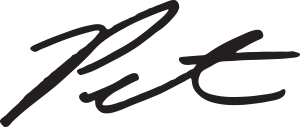The Ideal Learning and Development Strategy for You and Your Firm
The Ideal Learning and Development Strategy for You and Your Firm
Prior to the COVID-19 crisis, most leaders agreed that employee recruitment and retention was the #1 issue facing engineering and architecture firms. At the same time, employee growth and development was our talent’s top priority.
What has and will change moving forward?
Nothing!
Once we’ve addressed safety and survival, our focus must be on how we can more effectively attract, develop, and retain the talent that we need to grow and prosper in the “new era” that is both here and accelerating further forward.
The answer to doing so is to develop a formal and strategic employee learning and development program. To get there, we can leverage both proven models and innovative practices.
“Leaders: Now is the time to prioritize “people”. Doing so is the only way to ensure that your organization, talent, and teams are healthy, growing, effective, and connected moving forward.”
–Peter C. Atherton
The 70/20/10 Model
The 70/20/10 learning and development model works, especially in professional services.
The idea is for 70 percent of our time to be “on-the-job” training with challenging stretch assignments focused on future needs and growth goals, 20 percent with 1-on-1 supervisor coaching and mentoring, and 10 percent with relevant outside training, coursework, webinars, podcasts, and reading.
To put this in context, let’s assume we want to formally teach and develop our talent only 25 percent of the time. This would be 40-hours of a typical 160-hour work month. In this scenario, the remaining time would consist of work on routine assignments with previously mastered skills.
If we apply the 70/20/10 rule, 10-hours per week would be focused on learning and development and would generally breakdown into 7-hours of stretch assignments, 2-hours of supervisor coaching, and 1-hour of outside training.
Does this look like a typical week for your employees?
Even if we wanted to reduce the formal learning and development by-half, would our employees routinely have 3 to 4-hours per week of planned stretch assignments, 1-hour of coaching with supervisors, and 30 minutes of relevant outside training?
For many organizations, this may still not be the case.
“As leaders, if we aren’t instilling a culture of learning and development, creating capacity for supervisors, and incentivizing the behaviors we seek, how can we really expect to have fully engaged, growing, and loyal talent?”
–Peter C. Atherton
You Are Not Alone
The war for talent is real and pace of change will continue to accelerate through and beyond the COVID-19 crisis.
Leading today can be both busy and consuming – but our efforts need to take us, our teams, and our organization to a better place. To compete and win, we all need to adapt. Larger firms need to be more agile. Smaller firms need to systemize. Firms who grow through mergers and acquisitions need more cohesion, while those favoring organic methods need to be more entrepreneurial.
“It’s better to tap into larger resources – some located much closer than we think.”
–Peter C. Atherton
Leaders cannot (and should not) take this all on alone. It’s better to tap into larger resources – some located much closer than we think.
Peer-to-Peer Learning for Employees
Whether virtual or face-to-face, Peer-to-Peer learning is a method where engaged peers learn from and with each other.
Internally, Peer-to-Peer learning can take place in a variety of employee resource groups (ERG). These can be technical or functional in basis (i.e., process engineers, quality control advocates, project managers, principals, etc.) or have a personal interest basis (i.e., young professionals, working parents, veterans, empty-nesters, etc.).
The idea is to bring together peers and their ideas to build community, comradery, connections, collaboration, and solutions across offices, regions, and divisions to improve both performance and culture.
The design of a group’s charter is essential, as is the need for safety, trust, and effective facilitation. ERGs can also begin with outside facilitation and then be transitioned after a 6, 9, or 12-month period.
Peer-to-Peer Learning for Leaders
As much as ERGs can bring out the best in our organizations and provide critical insight, it is not enough for leaders who are tasked with continuously positioning their teams and organizations for success.
For most leaders, external peer-to-peer learning is the key to greater growth and development.
Such opportunities can take the form of:
- Executive coaching
- Formal or informal outside board of directors
- Attendance at roundtable events
- Participation in mastermind groups
There are advantages and benefits to each – and all can apply.
“The idea is for leaders to consistently surround themselves with others who share common goals, but have a diversity of experiences, circumstances, ideas, and perspectives.”
–Peter C. Atherton
The idea is for leaders to consistently surround themselves with others who share common goals, but have a diversity of experiences, circumstances, ideas, and perspectives.
Goals and strategies are important. The 70/20/10 model helps guide supervisor engagement and employee growth and development. Peer-to-Peer learning helps us connect and unleash the power of many. Successfully combining these, however, is ideal for building vertically and horizontally strong organizations positioned to thrive.
Leaders: Now is the time to prioritize “people”. Doing so is the only way to ensure that your organization, talent, and teams are healthy, growing, resilient, and connected moving forward.
You can also check out a special episode of the first-ever AEC Industry “Podstorm” focused on this very subject here: Ideal Learning and Development Strategies – Podstorm Episode 16
To your winning,

PS – Are you a leader who wants to take your engineering, architecture, or construction-related firm to the next level? Learn more and apply to become part of The AEC Leadership Mastermind and also check out our custom-designed and team-focused Leadership and Management Development Programs.
PSS – Do you want to learn how to excel and prevent burnout in you and your organization? Check out one of the most important chapters in “Reversing Burnout” for FREE by clicking HERE.

Pete Atherton
About the Author
Peter C. Atherton, P.E. is an AEC industry insider with over 30 years of experience, having spent more than 24 as a successful professional civil engineer, principal, major owner, and member of the board of directors for high-achieving firms. Pete is now the President and Founder of ActionsProve, LLC, author of “Reversing Burnout. How to Immediately Engage Top Talent and Grow! A Blueprint for Professionals and Business Owners”, and the creator of the I.M.P.A.C.T. process.
Pete is also the host of The AEC Leadership Today Podcast and leads The AEC Leadership Mastermind.
Pete works with AEC firms to grow and advance their success through modern and new era focused strategic planning, executive coaching, leadership and management team development, performance-based employee engagement, and corporate impact design. Connect with him through the contact link below.


